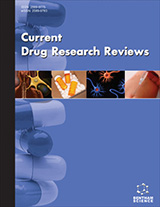Abstract
Background: Majoon-Najah is a composite Unani formulation that consists of multiple medicinal plants and is advised for neurological illnesses. Several studies were carried out on Majoon-Najah (MN) and its ingredients to evaluate the protective effect against seizure and antidepressant activity in animals using a classical form as well as extract. Terminalia bellerica and Emblica officinalis are the major constituents of MN. Scientifically documented literature summarises the hepatoprotective potential of these constituents.
Aim: The current study aimed to evaluate the possible hepatoprotective, antioxidant and antiinflammatory perspective of traditional Indian Unani formulation MN and Majoon-Najah hydroalcoholic extract (MNHE) in a Guinea pig model.
Methods: Thirty adult male albino guinea pigs were randomly assigned into five groups for this study. MN and MNHE were given intragastrically for 15 days, followed by intraperitoneal Cadmium chloride (CdCl2, 3 mg/kg/day) from days 8 to 15, as per the schedule. Blood samples were taken from the heart on the 16th day, and the liver was operated on for biochemical analysis and histopathology under complete anesthesia.
Results: CdCl2 changed the levels of liver function markers, serum biochemical indicators like albumin, total protein, glucose, and cholesterol in the blood; lipid peroxidation (MDA), glutathione reductase (GSH), superoxide dismutase (SOD), and glutathione peroxidase (GPX) in hepatic tissue homogenate, pro-inflammatory cytokines level and liver cytoarchitecture. MN and MNHE were found to protect guinea pigs’ liver from CdCl2-induced injury by lowering raised parameters and increasing enzymatic antioxidants. MN and MNHE did not significantly heal injured liver tissues caused by CdCl2 in histopathological examinations.
Conclusion: CdCl2 induces hepatotoxicity that is likely to worsen with increasing dosage and duration of exposure. MN and MNHE exert their hepatoprotective action by scavenging free radicals, decreasing malondialdehyde levels, activating antioxidant enzymes, and down-regulating proinflammatory indicators.
Graphical Abstract
[http://dx.doi.org/10.1615/JEnvironPatholToxicolOncol.v31.i2.50] [PMID: 23216638]
[http://dx.doi.org/10.5530/ijpi.2020.3.70]
[http://dx.doi.org/10.26438/ijsrbs/v5i6.170179]
[http://dx.doi.org/10.1186/s12917-018-1457-5] [PMID: 29699558]
[http://dx.doi.org/10.7717/peerj.6322] [PMID: 30834179]
[http://dx.doi.org/10.4254/wjh.v12.i11.949] [PMID: 33312421]
[http://dx.doi.org/10.3390/app11083507]
[http://dx.doi.org/10.3389/fphys.2015.00363] [PMID: 26858648]
[http://dx.doi.org/10.1007/s12291-010-0058-2] [PMID: 21966117]
[http://dx.doi.org/10.1053/j.gastro.2019.02.002] [PMID: 30742832]
[http://dx.doi.org/10.3390/coatings11050594]
[http://dx.doi.org/10.1016/j.jep.2020.113640] [PMID: 33307058]
[http://dx.doi.org/10.1007/s00580-019-03045-3]
[http://dx.doi.org/10.1038/s41598-019-56860-7] [PMID: 31889107]
[http://dx.doi.org/10.4103/0976-0105.177703] [PMID: 27057123]
[http://dx.doi.org/10.1016/j.lfs.2020.117770] [PMID: 32407846]
[http://dx.doi.org/10.1111/jfbc.13769] [PMID: 34021611]
[http://dx.doi.org/10.1016/j.ecoenv.2021.112947] [PMID: 34736034]
[http://dx.doi.org/10.1016/j.fct.2020.111944] [PMID: 33359024]
[PMID: 32343266]
[http://dx.doi.org/10.1186/s12944-020-01231-9] [PMID: 32178678]
[http://dx.doi.org/10.1016/j.fshw.2017.12.002]
[http://dx.doi.org/10.1080/14786419.2018.1550768] [PMID: 30663362]
[http://dx.doi.org/10.1016/j.toxrep.2021.01.001] [PMID: 33489777]
[http://dx.doi.org/10.1111/iep.12346]
[http://dx.doi.org/10.5582/ddt.2018.01081] [PMID: 30880325]
[http://dx.doi.org/10.3390/antiox10030364] [PMID: 33670839]
[http://dx.doi.org/10.30802/AALAS-JAALAS-18-000118] [PMID: 31010455]
[http://dx.doi.org/10.1007/s11356-019-04620-5] [PMID: 30852747]
[http://dx.doi.org/10.15171/bi.2014.008] [PMID: 25337468]
[http://dx.doi.org/10.1155/2018/5253623]
[http://dx.doi.org/10.3390/coatings11050501]
[http://dx.doi.org/10.1007/s12011-019-02016-7] [PMID: 31863275]
[http://dx.doi.org/10.2147/DDDT.S237107] [PMID: 32546960]
[http://dx.doi.org/10.1016/j.etp.2011.01.014] [PMID: 21371873]
[http://dx.doi.org/10.1002/ptr.6702] [PMID: 32307775]
[http://dx.doi.org/10.1007/s12272-014-0433-2] [PMID: 24993870]
[http://dx.doi.org/10.1039/c3fo60237k] [PMID: 23978895]
[http://dx.doi.org/10.1016/j.toxrep.2020.08.023] [PMID: 32963966]
[http://dx.doi.org/10.1007/s12011-022-03286-4]
[http://dx.doi.org/10.1016/j.toxrep.2021.04.011] [PMID: 34026559]
[http://dx.doi.org/10.3748/wjg.v19.i2.241] [PMID: 23345947]
[http://dx.doi.org/10.1186/s12893-019-0664-8] [PMID: 32050952]
[http://dx.doi.org/10.3389/fimmu.2021.708959] [PMID: 34447378]



























